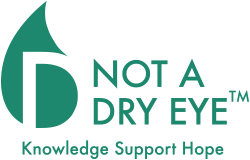In 2002, while treating patients for rosacea, Dr. Rolando Toyos discovered that Intense Pulse Light (IPL) could be used as a treatment for meibomian gland dysfunction (MGD).
During IPL, light absorbed by blood vessels generates heat in the dermal layer of the skin. This melts meibomian gland secretions and opens the glands. This also closes off blood vessels near the surface of the skin and decreases the inflammatory cytokines that contribute to MGD. In addition, IPL reduces the bacterial load on the skin. This is one of the reasons it helps with acne. There is also some evidence that IPL reduces mite populations on the eyelashes.
Intense Pulse Light Procedure
During the procedure, a technician places a light shield over the eyes and waves a laser light, or sometimes a white light, from ear to ear. Immediately after treatment, the glands are expressed. Expression helps to remove stagnated secretions. Upper lids are not treated directly, relying on residual heat to transfer to the upper lids.
IPL should be used only if skin is Fitzpatrick type 4 or greater, according to the Fitzpatrick skin quiz.
Younger patients typically need fewer treatments than older patients. Most patients require at least four treatments. A typical treatment takes about 15 minutes.
Insurance does not cover IPL for the treatment of MGD.
Some patients have complained that the manual gland expression following the treatment can be extremely painful.
The therapeutic effects of IPL may be limited, particularly if fibrotic tissue, which IPL does not remove, obstructs the meibomian glands.
E-Eye Dry Eye Syndrome Therapy is an IPL device available only in the UK. It’s manufacturer claims results last for up to three years and recommends at least three sessions.
References
Adapted from: Toyos Clinic
Retrieved October 10, 2015
E-Eye Dry Eye Syndrome Therapy
View product information

